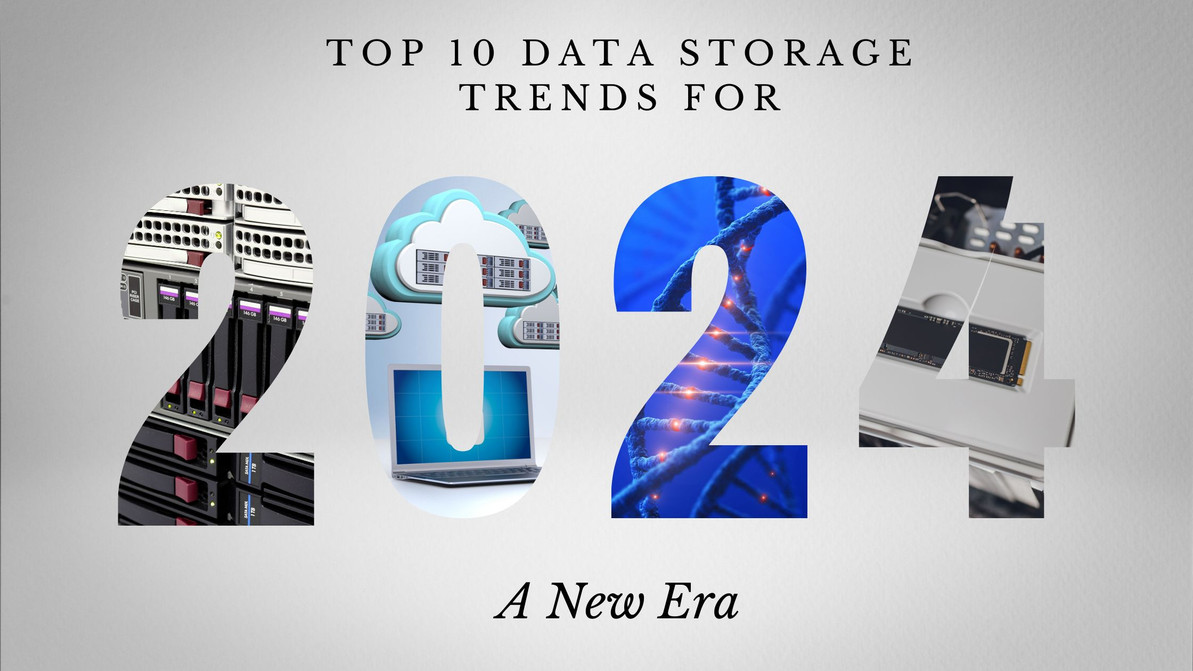2024's Top 10 Data Storage Trends: A New Era
The landscape of network storage is witnessing a monumental shift as we move into 2024, spurred by the convergence of technological innovation and evolving business needs. This transformation is reshaping IT infrastructure, marking a new era in data storage. In this article, we'll explore key trends shaping the future of network storage, drawing from insights provided by STORViX, Exploding Topics, and Sangfor Technologies.
1. Storage as a Service (STaaS)
The shift towards STaaS is akin to how music streaming revolutionized the music industry. Organizations are moving away from traditional capital-intensive storage models to more flexible, cloud-based solutions. This trend caters to the growing demand for scalable and cost-effective storage options, allowing businesses to pay for only what they use, much like streaming services. This transition to STaaS is pivotal in accommodating the explosive growth of data in the digital age.
2. AI-Driven Operations (AIOps)
The integration of AI in storage operations is transforming the storage landscape into a self-managing, self-healing entity. AIOps enables systems to predict and resolve issues before they escalate, ensuring higher uptime and efficiency. This smart approach to storage management is particularly beneficial in complex environments, where the sheer volume and velocity of data can overwhelm traditional management tools. As AI continues to evolve, its role in storage operations is set to become even more crucial.
3. Cybersecurity and Ransomware Protection
In an era where data breaches and cyber threats are rampant, the focus on advanced cybersecurity measures in storage solutions is more critical than ever. Enhanced ransomware protection features are being embedded directly into storage systems, offering a proactive defense mechanism. This shift towards integrated security layers within storage solutions not only safeguards data but also instills confidence among businesses and users about the safety of their digital assets.
4. Hybrid Cloud Integration
Hybrid cloud models offer the best of both worlds: the security and control of private clouds with the scalability and innovation of public clouds. This integrated approach allows businesses to tailor their IT environments to specific needs, facilitating a more agile and flexible operational model. As hybrid cloud adoption grows, the ability to move and manage data seamlessly across different environments becomes a key competitive advantage for businesses.
5. Green Data Storage
The sustainability aspect of data storage is gaining unprecedented attention. By focusing on low-emission storage solutions, the industry is not only addressing its environmental impact but also paving the way for more energy-efficient and cost-effective storage solutions. As businesses become more environmentally conscious, adopting green storage practices becomes a crucial part of corporate social responsibility.
6. NVMe Technology
The adoption of NVMe technology signifies a major leap in storage performance, offering faster access and processing of data. This advancement is particularly beneficial in data-intensive applications like big data analytics and high-performance computing. As NVMe technology matures, it is expected to become more accessible, further accelerating its adoption across various industries.
7. Flexible Financing Models
The shift to flexible financing models is a game-changer, especially for small and medium-sized businesses. This trend breaks down financial barriers, enabling organizations of all sizes to leverage the latest storage technologies without hefty upfront investments. It reflects a customer-centric approach in the storage industry, aligning more closely with the varied financial realities of different businesses.
8. Simplified Onboarding and User Experience
The emphasis on user experience in data storage solutions is revolutionizing how businesses interact with their IT infrastructure. By simplifying onboarding processes and enhancing usability, storage vendors are making it easier for businesses to integrate advanced storage solutions into their operations. This focus on user experience is crucial in an era where technology is becoming increasingly complex.
9. DNA Data Storage
DNA storage represents a paradigm shift in data storage technology, offering unprecedented levels of density and longevity. This technology has the potential to revolutionize how we store and access the ever-growing amounts of data. As research progresses and costs decrease, DNA storage could offer a sustainable and long-term solution to the world's data storage challenges.
10. Cloud Repatriation
Cloud repatriation highlights the dynamic nature of data storage strategies. As companies reassess the costs and benefits of cloud storage, many are finding value in returning to on-premises solutions. This trend underscores the importance of flexibility and control in data management, especially for data-sensitive organizations.
Conclusion
As we look towards 2024, the data storage landscape is being redefined by these key trends. From embracing cloud and AI technologies to prioritizing cybersecurity and sustainability, these developments are not just reshaping storage strategies but are also indicative of broader shifts in the digital ecosystem. Businesses that adapt to these trends will find themselves better equipped to navigate the challenges and opportunities of the digital future.
Recent Posts
-
How does hpe's hybrid cloud solution help with data backup and recovery?
Expanding upon the original post to elucidate the multifaceted advantages of HPE GreenLake for Backu …Mar 8th 2024 -
How is hpe simplifying data management across hybrid cloud?
In today's fast-evolving digital landscape, managing data across hybrid cloud environments presents …Feb 23rd 2024 -
What Advancements in Data Storage Is HP Making?
In the realm of data storage, Hewlett-Packard (HP) stands at the forefront, driving innovation to si …Feb 8th 2024




